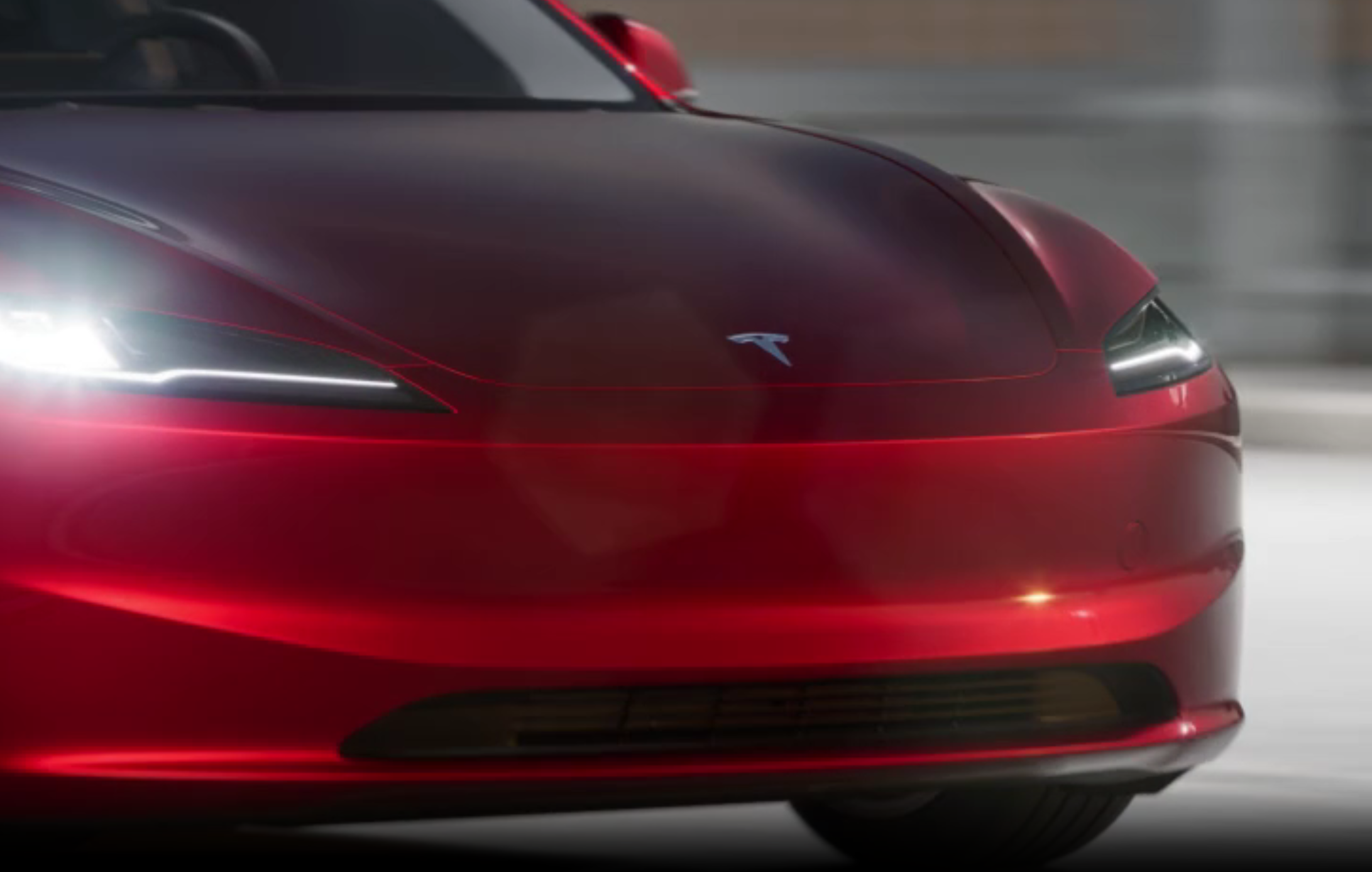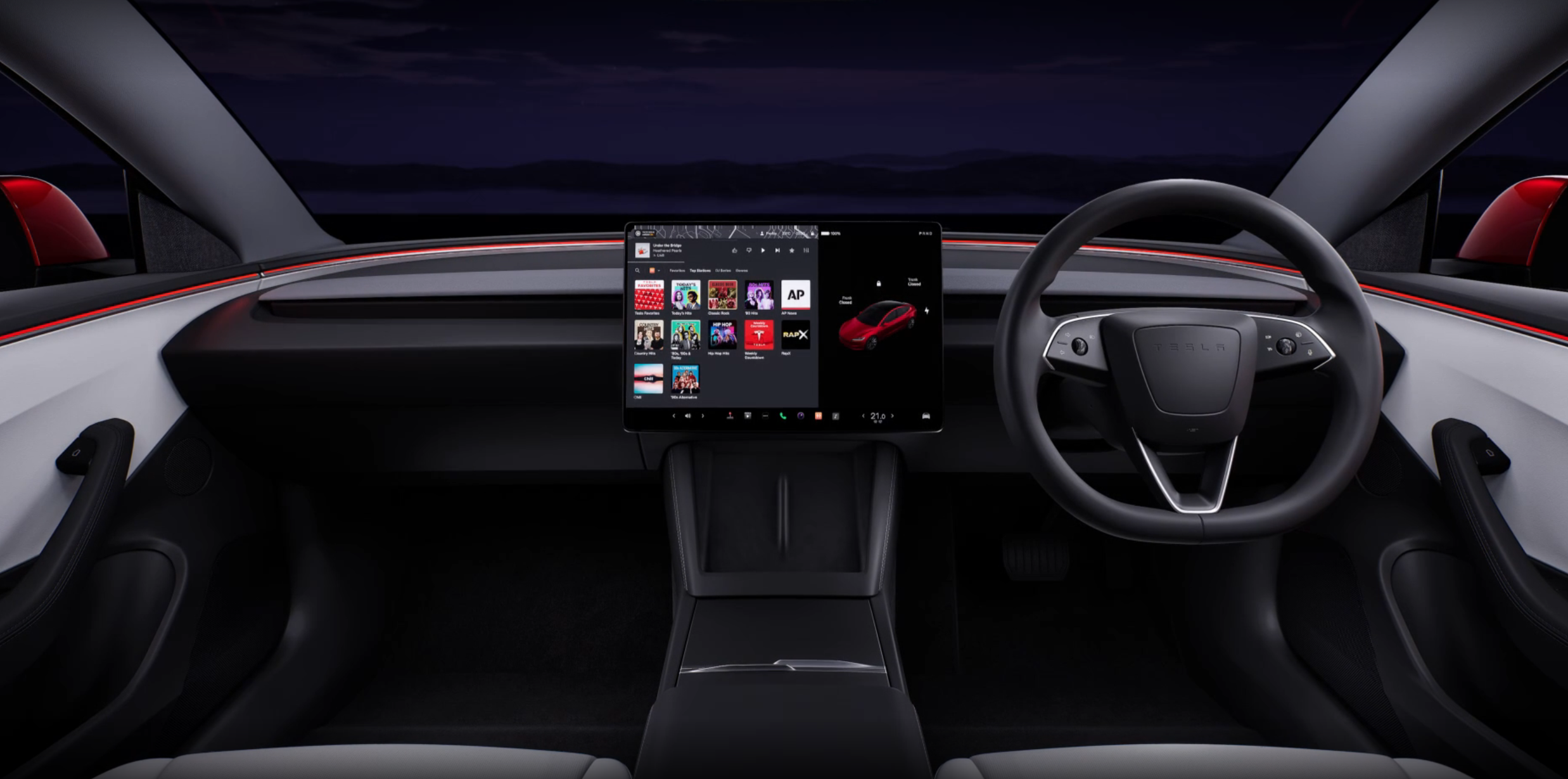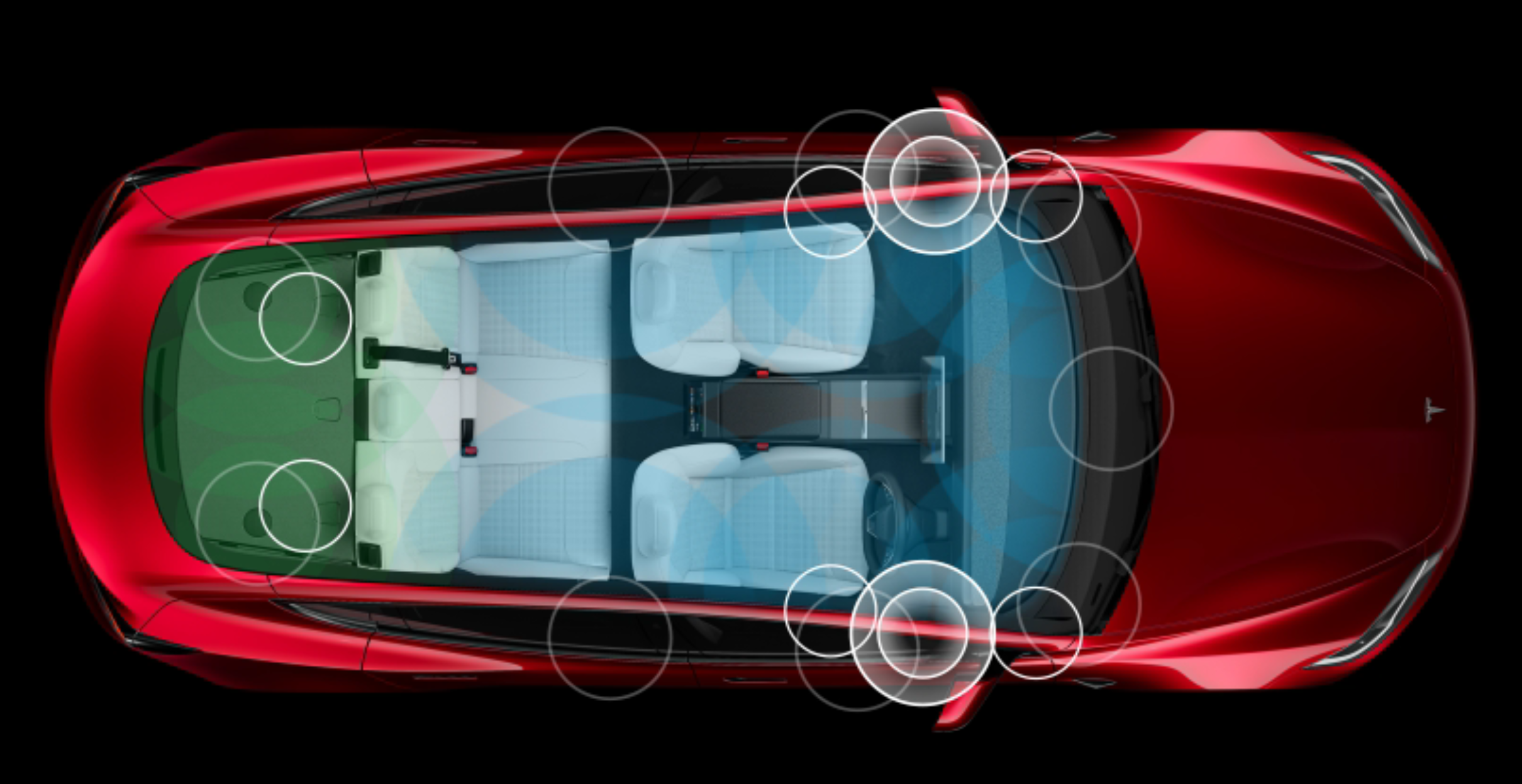Tesla Model 3 Highland
Last updated 11-May-2025
The Tesla Model 3 Highland was announced in Sept 2023,and over a period of about 9 months became available in all countries served by Tesla. The car includes a number of notable updates over the previous model which we detail below.
The original Model 3 was launched in 2017 and was the first truly mass market car Tesla offered following on from the acclaimed success of the Model S and the Model X. Through its life the original Model 3 went through some significant changes including changes to the motors and batteries and the inclusion of a heat pump. The interior was also mildly reworked over that time. At the original launch the car was far from perfect, many found it noisy, the suspension was more go cart like than refined, and some of the materials and finishes were far from premium. The build quality, especially in the early years, also left a lot to be desired. Tesla steadily made improvements over the following few years.
The Highland update sets about creating a further step change in quality above the outgoing model while still retaining the price point in the market. The degree to which has been successful is debateable as there are still some areas where the competition has caught up, and there have been some design decisions made by Tesla which have arguably hurt sales.
Technical updates
The battery and the motors are essentially unchanged on the RWD and Long Range models, with the Performance model getting a new rear motor. The Performance model also gets adaptive suspension with essentially 2 settings, a comfort orientated setting and a sport setting. Other technical changes include:
The WLTP (Worldwide Harmonised Light Vehicle Test procedure) tests report the Rear wheel drive (RWD) model version now has a range of 513km/318 miles up from 491km/305 miles, whereas the Long Range All Wheel Drive (LR AWD) model has a WLTP range of 629km/390 miles up from 601km/373 miles, and the more accurate EPA figures probably 10% below these. Like all EVs, the real world range is unlikely to be close to the figures above in all situations, and our battery analysts YouTube videos suggest the RWD long term average will be close to the EPA figures and the LR figures will be 5-10% below them. The Performance model is typically lowers still but that reflects the more enthusiastic driving style of performance owners.
While it's unlikely to be an issue for many, the top speeds has also been reduced down to 210km/h or 120mph, down from 145mph in the case of the LR AWD. The performance to 60mph or 100km/h has also not changed on either car although we do wonder if the acceleration profile has changed because of the reduced top speed, something that may be apparent when overtaking. We await meaningful real world tests.
The principal reason for the increase in range, given the battery and motors are unchanged, is down to a reduction in drag. Tesla have both improved the aerodynamics of the car shape, it now has a lower and sleeker front end and added new lower drag tires and wheel design. The wheel and tire choice have long been known to have a material effect on the efficiency of the car. The overall effect is a reduction in the coefficient of drag (Cd) figure to 0.219 v from 0.225 on the outgoing model.
The Performance model is however different, with larger rear wheels increasing traction but also increasing drag, the range hasnt improved.

Drivers Perspective
Probably the biggest and most significant change is the update to the steering wheel and the removal of the control stalks. Tesla first did this with the Model S and Model X where they moved the indicators and autopilot controls to the steering wheel, whilst the drive select control moved to the screen, albeit with an option for this to be automated. We have seen a split opinion amongst buyers, but feedback has been such that Tesla opted to include an indicator stalk in the Model Y update, a clear sign that the decision to remove stalks has not been universally welcomed.
The screen is also said to be brighter although in our experience it's rarely at 100% anyway.
Comfort and Interior
There have been a number of changes with respect to comfort. The seats are said to be more comfortable and are now ventilated in the front. The Performance model now comes with sports seats offering more lateral support. Some owners have reported they find the new seats less padded and therefore less comfortable and we suggest this is simply personal preference. The app, as before, allows you to control features of the car and you can have the car reach the desired temperature before you get in.
One of the criticisms of the old car was noise and Tesla have worked hard to improve this, including added acoustic glass all round. We'd also like to see more sound insulation within the body, for example the door panels and boot lining, and reduce the noise entering the cabin from the suspension which was particularly poor in the outgoing model. Tesla claim to have improved this. Whilst Tesla claim the new car is notably quieter than the old car, reviews have struggled to notice much difference. We believe the difference is most noticeable when comparing an early Model 3, however the continuous changes to the older model improved things over time and the step change from the best of the pre highland cars to the new highland model is relatively small.
Rear passengers don't miss out either. While the ventilated seats are only in the front, the rear seats are said to be more comfortable and there is now a small 8" rear screen allowing users to control basic functions like heating and seat cooling, whilst also able to watch videos.
Finally, ambient lighting has been added. This feature allows owners to customise the interior lighting and create a personalised mood. This enhances the overall cabin ambience and is in line with many other car models. Like all changes, sometimes there is a downside and some have reported seeing the ambient lighting reflecting off the glass causing a distraction, although this doesnt seem to be a problem for most.

Exterior
The most notable change is the sleeker headlights and rear diffuser. The car carries over much of the old cars DNA and there is no mistaking the car is a Tesla Model 3, just with a sharper new face. The Performance model goes a little further with a few tweaks, primarily a front splitter and rear spoiler, but the differences are fairly small.
The other area of change is the range of colours. Tesla have changed some of the colours available although this does vary a little by where the cars are made.
There are also the obligatory tweaks to the wheel design. The Performance model now also gets wider rear wheels.
Tesla have since the Highland model came out updated its 'DNA' with the Model Y now taking many design features from the Cybertruck including light bars. We're yet to be persuaded that the Model Y looks good, whereas we like the look of the Model 3.
Audio
Tesla have always been known for good quality HiFi although we've have been more neutral on the performance, in part because the cabin noise has often meant the volume needs to be louder than we would like and quiet passages of music compete with cabin noise. The Highland model is said have improved with 17 speakers on the LR model, up from the previous 14. The LR model also has dual subwoofers and dual amplifiers. If the sound has improved, and the cabin noise isolation improved, we would to see a notable improvement in audio quality across a wide range of music tastes.

Technology and Autopilot
Tesla have improved Bluetooth connectivity and the microphone, although again, any improvement in background cabin noise would improve microphone performance.
There are however no improvements to peak charging rates with the RWD still limited to 170kw and the LR model to 250kw. Whether higher charge rates can be sustained for longer is still to be seen.
The autopilot hardware is now HW4, but there is no front bumper camera which many predicted. There are also still no parking sensors (although we believe some regions such as Australasia still get them) and the same issues with some of the EAP features can be expected.
Storage
The rear trunk has been increased in size, now offering 594 litres, up from the previous 561 litres. Otherwise, things are pretty much as they were before, the centre console has had a very light make over, and the door bins look similar to the latest Model Y door bins with soft materials lining them.
Price and Availability
Tesla have gone through a significant demand shift in recent years and there is now plenty of inventory. There may be a small wait for certain colour combinations but there is also usually instant availability if you are prepared to be flexible.
The price has not changed much, but finance deals have improved significantly and there is often 0% finance available, or competitive lease prices. Tesla are now working hard to get sales as 2024 saw a decline in their total sales, and as such they are prepared to offer incentives to win business.
Conclusion
There is much to like about the Highland model. The improvements to the cabin are worthwhile, and the small increase in range is to be welcomed. The public reaction to the loss of the control stalks from behind the steering wheel has caused a problem to the extent that the Juniper Model Y retained the indicator stalk. This is probably the biggest issue with the car and some suspect Tesla will introduce the indicator stalk back into the model at some point.
Whilst the Juniper Model Y has arrived in early 2025, we're not convinced by the looks, and whilst its storage is vastly better than the Model 3, we'd still e inclined to go for the Model 3 if you can get used to the indicator buttons. Its a better looking and driving car.